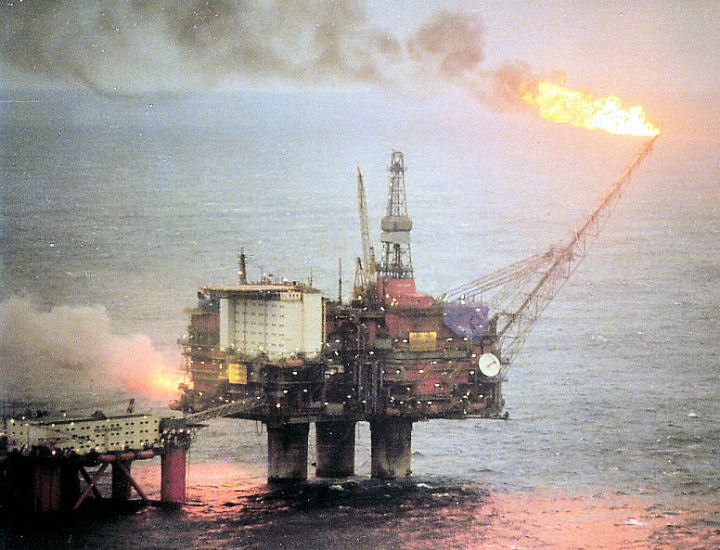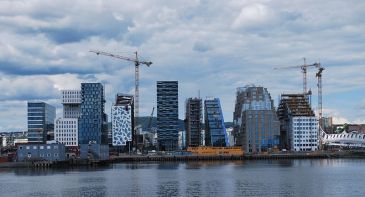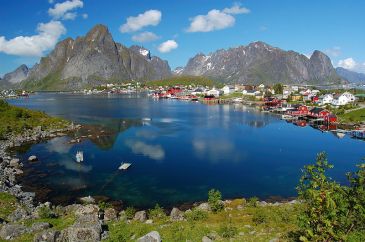By Johan Galtung*
TRANSCEND Media Service – Norway, on top of the UN indicator of good life for years, is now hit by two different crises; one for the less developed aspect and one for the more developed. Yet the citizens are protected by a massive oil slick, the biggest sovereign fund in the world, the Government Pension Fund for an aging population when oil dries out. For only 5 million inhabitants, $178,000/capita, and growing.
First crisis: Third World monoculture—oil/gas–hit by the world markets; from over $ 100 per barrel to under 50 recently.
A crisis of over-supply and also of under-demand, less than expected: toxic fossil fuels do the same to the lungs of Planet Earth as smoking to the lungs of humans. Green alternatives strong in Germany, China, coming in USA.
A generation was needed for the smoking truth to penetrate, but smoking survived in the Third World–for some time. We will get the same for addiction to fossil fuels, from denial to abstention, with collective decisions. So far, most action is coal focused–including the Norwegian oil fund no longer investing–time is coming for oil.
With falling prices, demand insecure, and 1/3 of employment being oil-dependent, unemployment is rising. In February 4.1% of the about 2,730,000 total were unemployed, rising to 8% (Klassekampen, KK 12 May 15). The powerful oil branch claims it is all temporary, soon the prices will go up. Official optimism, hoping it will be self-fulfilling.
Second crisis: An enormous building boom (Oslo is Europe’s fastest expanding capital) with Norwegian households being among the world’s most indebted (KK, 18 May 15), and very little saving. Sounds familiar? Norwegians aim straight for top material standards, also for children, with very cheap money, trusting that the oil-driven boom will last.
The world currency market tells another story. The euro was like pegged to 8 Norwegian kroner, now 9.5 buying and 8.5 selling (Den norske Bank, 8 Aug 15); the huge difference says it all. The euro is falling relative to dollar–but soon the dollar may follow, with the world bond market falling (Financial Times, 6 Aug 15).
Nevertheless, Norway will cover this with unemployment insurance so far; and some will prefer that to working.
They will add to the huge number (15%?) of employed on sickness leave (“the back is aching, doctor”) when the real problem may be conflicts at work and low ability to handle them.
They are usually structural: the companies are too vertical; more horizontal cooperatives with sales points may be better.
For employers a golden opportunity to get rid of “brysomme arbeidere“, “troublemakers”, making the situation worse: fewer voices speaking.
Add loneliness to that, a feeling of uselessness particularly among men (75% of suicides over 75 are by men, KK, 16 May 15). But also among youth: see the movie OSLO; emptiness, empty sex, drugs–suicide.
Add to this high immigration, mainly from Eastern Europe: 15.6% are either born abroad or (1/5) children of two parents born abroad. Norwegians see the country slipping away from them. Breivik killed 76 persons four years ago blaming it on the Labor Party’s opening for Muslims.
Add to this rising inequality, top wealth unheard of in Norwegian history, but no bottom misery like in Norway’s model, USA; not yet.
As the brilliant Swedish sociologist Göran Thernbom, now at Cambridge, points out again and again: a new political alliance between lower and middle classes is needed to handle this. Elections in September 2017 may be won by the Labor Party; as solid middle class as US Democrats.
Moreover, tied to “the Nordic model” with state, employers and employees sharing a growing cake; but only .9%, equality growth being negative. A Third World economy benefiting few; stagnation or worse for the rest.
With the massive problems of atomie–destructuration, loneliness–and anomie–deculturation, meaninglessness–brought about by economists guided by The Bigger, The Better.
Example: they want to cut the number of municipalities from 400 to 100. Yet the local community is a major source of care, togetherness, sharing, identity.
More rational would be to increase the number to 4,000, average size 1,250 inhabitants, like Jondal in Hardanger. Small is beautiful. Some big is necessary, only build it horizontally, based more on local self-reliance than on Big.
Norway has 1,000 years of peace with Russia since Norwegian Vikings attacked; yet sanctions for problems badly understood. The economy is EU-oriented and the security US-oriented “when the Russians come”.
So, what are the solutions to all these problems? Ten points, some obvious:
- A complete economy, with agriculture, fishing, diverse industries, IT services, a quaternary sector of care for humans and nature;
- Decentralization, less polluting transportation, initiative on more hands, a less company-oriented, more cooperative-oriented economy;
- Increase interest rates to encourage saving and decrease debt;
- More progressive taxation, reintroduce inheritance tax;
- A switch from economic growth materialism to spiritual growth, benefiting from the excellent cultural offering of contemporary Norway;
- More Nordic Community, less German-dominated European Community;
- A non paranoid, open, relation to Russia in Norway’s interest;
- More China, admitting the error of a Nobel Peace Prize to an advocate of colonialism and US warfare (a prize to the Charter unproblematic);
- Strengthening Norwegian banks with some Islamic banking;
- Use the silent media: let 1,000 dialogues flourish, less “experts” who produced these problems, more common people with local ideas.
Most of this will not happen. Americanization in a bad sense has eroded the elite’s mental capacity; and the US Embassy will be against.
The prognosis for Norway is dim. And the fund is not forever.
Yet, watch this incredibly beautiful country! Cross it, from Norway I in the West to Norway II, the Oslo part in the East, on E134 or [7], both nature gems as roads. Watch the inviting emptiness between the two, speaking different Norwegian, different histories.
Norway III is the North, relating well to Russia beating Napoleon in 1812 paving the way for our independence in 1814; beating Hitler in 1944 paved the way for our freedom in 1945. Our friend, like the USA.
*Johan Galtung, a professor of peace studies, dr hc mult, is founder of the TRANSCEND Network for Peace, Development and Environment and rector of the TRANSCEND Peace University-TPU.
He has published 164 books on peace and related issues, of which 41 have been translated into 35 languages, for a total of 135 book translations, including ‘50 Years-100 Peace and Conflict Perspectives,’ published by the TRANSCEND University Press-TUP.
This article originally appeared on Transcend Media Service (TMS) on 10 August 2015: TRANSCEND Media Service – TMS: Norway Revisited: Two Crises-An Oil Slick-And?












